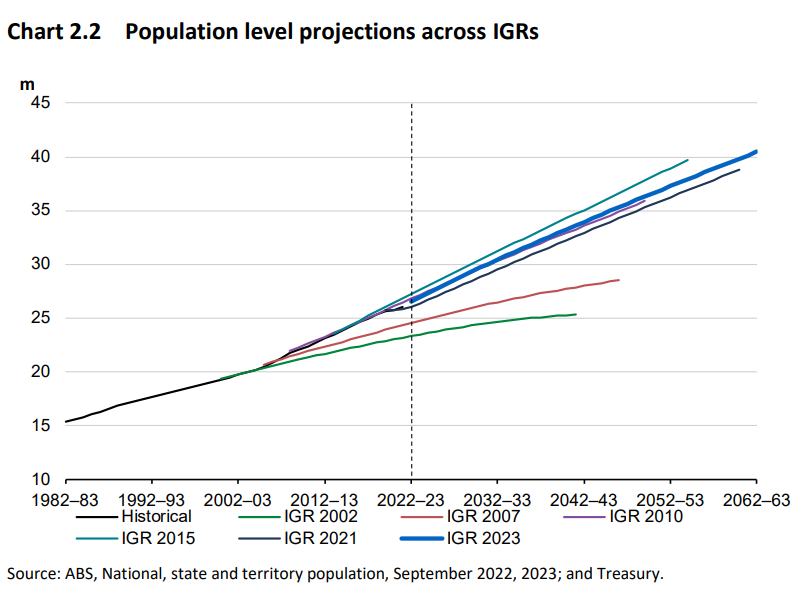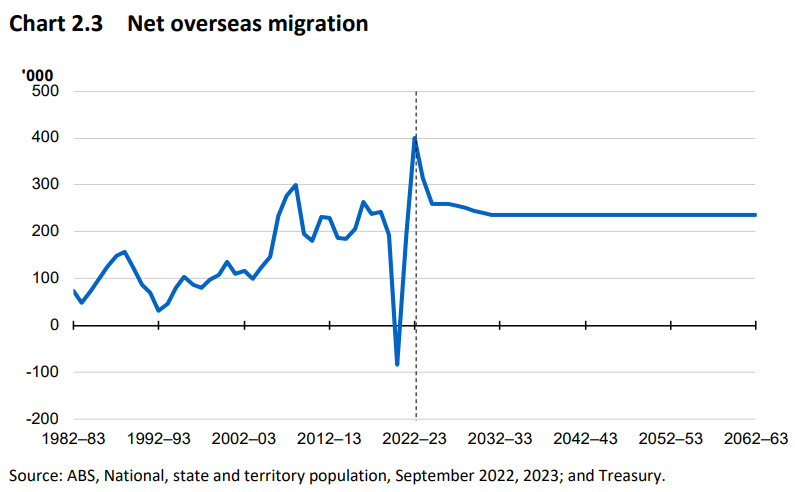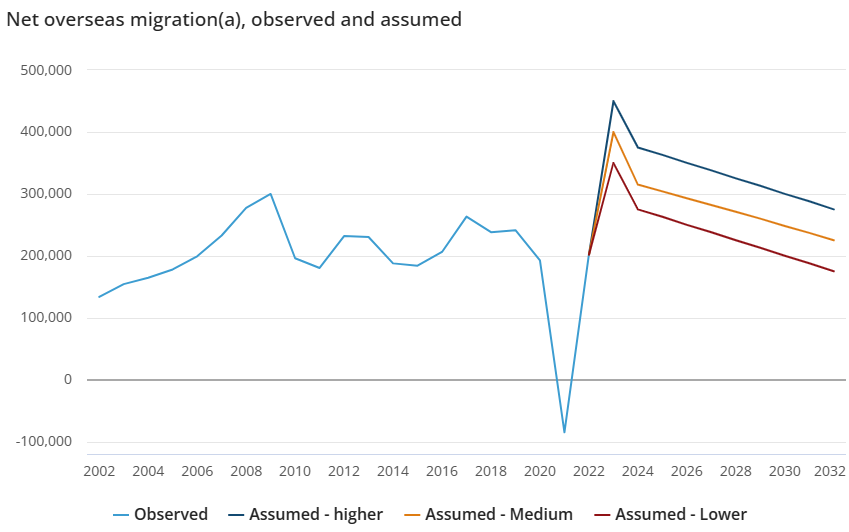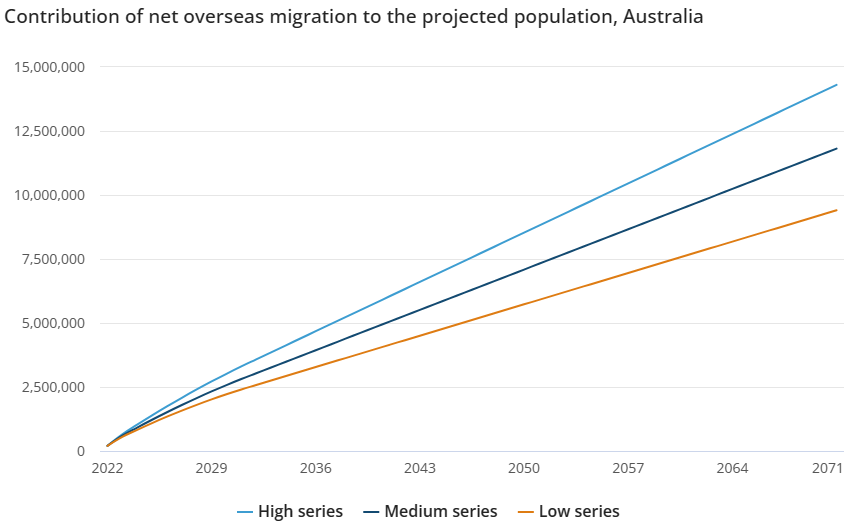In August, Treasurer Jim Chalmers released the 2023 Intergenerational Report (IGR), which projected a 14 million increase in Australia’s population to 40.5 million people by 2062-63 off permanently high long-term net overseas migration of 235,000:
Australia’s population is projected to grow from 26.5 million in 2022–23 to 40.5 million in 2062–63 (Chart 2.2).
Population projections are similar to those in IGRs since 2010, which reflect a continuation of migration settings over the past 20 years that have supported population growth, despite the declining total fertility rate observed during this period
(Chart 2.8).

Once this temporary catch-up subsides, net overseas migration is expected to fall to 235,000 per year, which is the long-run assumption.

On Thursday, the Australian Bureau of Statistics (ABS) released long-term population projections, which were significantly lower than the IGR released only three months ago.
The ABS’ medium projection is for Australia’s population to hit 37.7 million by 2063:

The ABS assumes a long-term NOM after 2032 of 225,000 people a year under its medium projection, which is 10,000 less than the IGR:

Nevertheless, NOM will still drive almost all of Australia’s projected population growth – i.e. 10 million extra people by 2063:

The above forecasts highlight why Australia desperately needs a long-term population policy.
Because currently we have bureaucrats within the federal Treasury, rather than the government, effectively setting the target.
Australians never voted for a ‘Big Australia’ and overwhelmingly do not support it. Yet, their wishes continue to be ignored and their living standards crushed.

